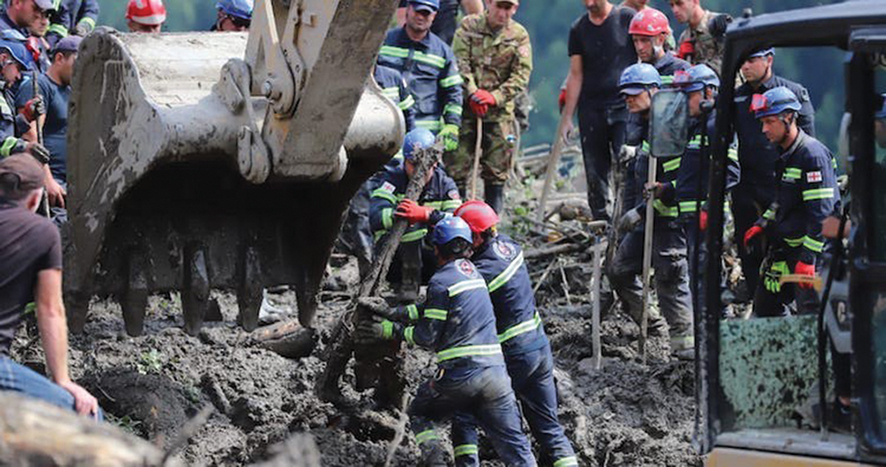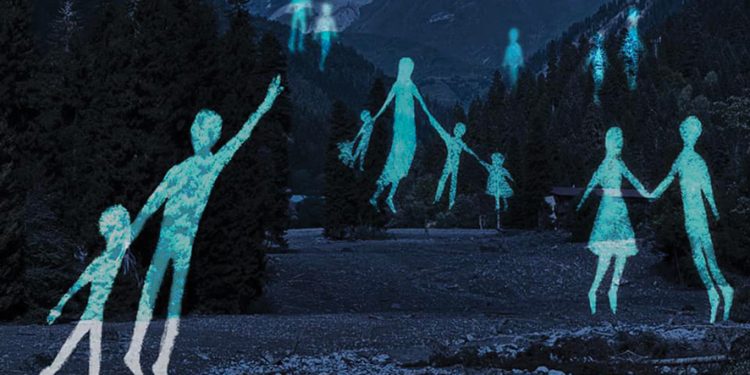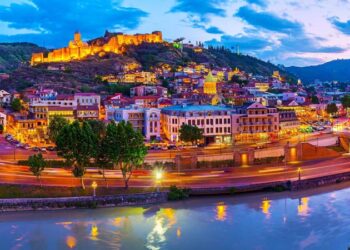In a heartbreaking turn of events, on August 3, the picturesque town of Shovi, nestled in the west of Georgia, was plunged into chaos when a devastating mudslide, triggered by a massive landslide, engulfed the area surrounding the Sunset Shovi hotel and nearby residential cottages. This natural disaster took a heavy toll, resulting in the loss of 21 lives, while 13 individuals remain unaccounted for at the time of writing. Among the victims, children are counted among the deceased and the missing, casting a somber shadow over the community.
The disaster, which struck the region of Racha, left the nation mourning on August 7, which was declared an official day of mourning in Georgia. The tight-knit community united in grief, as the enormity of the tragedy continued to unfold.
Over 200 brave rescuers plunged into the treacherous terrain, undertaking heroic efforts to locate survivors amid the wreckage. Alongside them, volunteers flocked to the disaster zone, driven by a shared sense of urgency and compassion. The international community also extended a helping hand, with various countries offering their assistance to the stricken nation.

The Ministry of Internal Affairs of Georgia launched an investigation into the catastrophe, invoking two articles of the Criminal Code: “loss of life by negligence” (Article 116) and “violation of safety rules during mining, construction, or other work” (Article 240). However, the complexity of the situation has raised the possibility of these charges being reclassified as more information surfaces.
As the rescue operations unfolded, a preliminary report by the National Environment Agency shed light on the causes of the disaster. The tragedy was attributed to a confluence of natural geological and hydrometeorological events that coalesced to form an extreme mudflow within the Bubusqli river valley. This unfortunate sequence of events was exacerbated by climatic changes, particularly, a surge in air temperature that accelerated the melting of glaciers, accompanied by atmospheric precipitation.
Contrary to assumptions, the report highlighted that the disaster’s timing was near-impossible to predict on a global scale, given the intricate factors at play. The report outlined how a rocky mass collapsed to the west of the Buba glacier, triggering a chain reaction that caused a section of the glacier to crumble. This, in turn, led to the overflow of subglacial waters, unleashing a powerful wash that coursed through the valley with terrifying speed.
One local resident recalled, “Three years ago, we said a landslide would come down in that valley and flood it, but no one listened.” The call for better monitoring and early warning systems resounded as the disaster illustrated the limitations of predictive capabilities.
Amid the devastation, international universities and nations expressed their willingness to contribute. The plea for detailed satellite images captured international attention, prompting discussions on bolstering predictive technologies and global cooperation in disaster management.
“We are now uploading satellite images taken by Landsat on July 27th and August 4th,” seismologist Tea Godoladze wrote on social media. “Landsat captured these images at a time when it was cloudy, and so the resolution is low. However, it is likely that approximately 7 km from Shovi, the bed of the Buba river widened dramatically, that is, a landslide-flood process began, which may have caused the river to become blocked (locals said the river was no longer flowing). This is exactly where monitoring and an early warning system could have helped! If we had online, instant access to these notifications, we would have been able to sound an alarm! If we had a suitable lidar, which all prestigious universities in Europe have, we would have been able to fly over it, clarify the data, and sound the alarm. These free Landsat images are uploaded too late – we need instant imaging!” she noted, adding a request to partner American and European universities to provide Georgia with paid satellite images of this period. “Maybe they were taken at a different time than Landsat and the picture will be clearer and cloud free! Please! Help us!” she wrote.

The catastrophe’s aftermath witnessed a remarkable display of resilience as the Department of Highways embarked on a week-long commitment to relief and recovery efforts. Minister of Regional Development and Infrastructure, Irakli Karseladze, led the charge, overseeing operations and ensuring an efficient allocation of resources.
In a bid to expedite recovery, the focus extended beyond rescue operations to the restoration of damaged infrastructure. A notable highlight was the initiation of the construction of a new temporary Sarmi bridge over the Chanchakhi river, covering a span of 136 km along the Kutaisi (Choma)-Alpana-Mamison Pass highway. The collaborative synergy among governmental entities, emergency services, and the Department of Highways proved crucial in orchestrating seamless relief and rehabilitation activities.
The tragedy of Shovi, Georgia, resonates as a poignant reminder of nature’s unpredictability and humanity’s capacity to unite in times of crisis. As the village rebuilds and endeavors to implement preventative measures, the global response underscores the power of solidarity in the face of adversity.
By Mariam Gorkhelashvili














